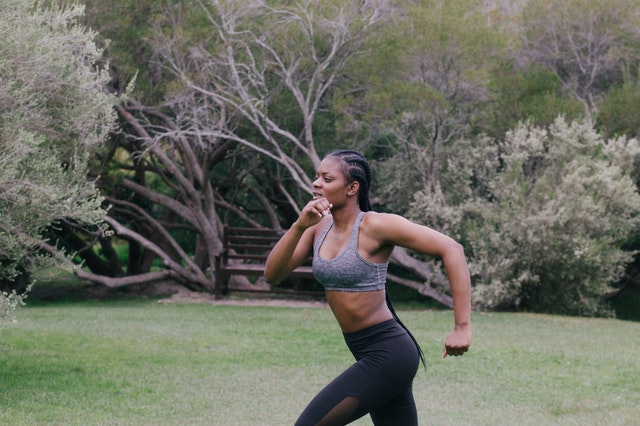Starting Your Journey into Kickboxing
Starting your journey into kickboxing can be thrilling yet daunting. New sport, new environment, new people, and a new coach—it’s a lot to take in. Plus, you’ll encounter many unfamiliar terms. Respect is a cornerstone in kickboxing, where everyone trains with mutual understanding and support, respecting each other’s boundaries. To help you acclimate, we’ve compiled a list of key kickboxing terms you’ll frequently hear.
At DefenseMonkees, we believe in the importance of having the freedom to choose your own path. That’s why we recommend this FightMore directory of kickboxing gyms in the Netherlands. You can easily find kickboxing gyms near you and select the one that fits your goals and preferences best.The Dojo
The term "dojo" refers to the training hall for martial arts. It's equipped with a special mat for safer practice. In Japanese, "do" means "way" and "jo" means "place," thus it translates to "the place where you learn the way." Our training space, known as the Rebel Box, serves this purpose.
Greeting Etiquette
Entering or leaving the dojo often involves a specific greeting ritual. The instructor signals when and how to line up for greetings, which could be in Dutch or a phrase like "Sensei ni Rei," depending on the school’s background. During training, a brief bow or the word "Osu" (pronounced Ush) acknowledges partners and instructors, though customs vary widely. Each martial arts school has its unique way of greeting, sometimes including salutes to masters, spirits, or even clapping to dispel negative energies.
Sensei ni Rei
This phrase, used to start or end a session, means "bow to the teacher." It's a sign of respect led by the instructor or an assistant.
Osu or Ush
Common in many martial arts, "Osu" is a respectful greeting or acknowledgment. It’s crucial to know when and how to use it, as it signifies respect and readiness.
Sparring Partner Greetings
Before and after sparring, greet your partner to ensure mutual readiness and respect. At the Rebel Box, we test each other with our weaker hand while keeping the stronger hand ready, identifying right or left-handed partners and ensuring clear communication to avoid unwanted strikes. Each dojo has its own rules, so observe and learn them.
Commands in Training
Boks: This command signals the start of practice after the coach’s explanation.
Stop: Indicates the end of a drill or exercise.
Break: Used when the coach wants to give specific advice to a pair during training.
Basic Fighting Stance
A fundamental kickboxing term, the "fighting stance," involves positioning your feet shoulder-width apart, knees slightly bent, with your dominant foot back. Right-handers place the right foot back (orthodox stance), while left-handers place the left foot back (southpaw stance). Balance your weight between both feet, keep your heels off the ground, tuck your chin slightly, and keep your gloves up for protection.
Back To Basics | Technical Beginner's Guide To Kickboxing
This video is a perfect introduction for those new to the sport. It covers foundational techniques, stance, movement, and basic strikes in a way that’s easy to follow and apply in your own training sessions. Whether you're training solo or in class, it's an excellent companion to your learning journey.
Punches and Kicks
Jab: A quick, straight punch with the lead hand (left for right-handers, right for left-handers). Used to measure distance, distract, or set up combinations.
Cross: A powerful, straight punch from the rear hand. Rotate your back shoulder and hip forward for maximum power.
Hook: A semi-circular punch delivered at close range, aiming for the opponent’s head or body. Keep your elbow at 90 degrees and rotate your hips for force.
Uppercut: A rising punch aimed at the opponent’s chin, used at very close range. Ideal during clinches.
Low Kick: A roundhouse kick targeting the opponent’s thigh, executed by stepping in with the standing leg and swinging the kicking leg in a circular motion. It can strike either the inside or outside of the opponent’s thigh.
⚠️ Protection
For your safety, we highly recommend using a groin guard and a mouthguard. Consider shin guards, boxing gloves, and MMA gloves for additional protection. Click here for essential protection to ensure your safety and that of others.
Additional Terms
Muay Thai Clinch: Also known as the "plum," the Muay Thai clinch involves grabbing the opponent's neck with both hands and controlling their posture. It’s used to set up knee strikes, elbows, or to off-balance the opponent.
Parry: A defensive technique where you deflect an incoming punch with your hand, redirecting its force away from you. This is crucial for setting up counter-attacks.
Checking: A defensive move against low kicks, checking involves lifting your leg to block the opponent's kick with your shin. It requires precise timing and balance.
Roundhouse Kick: A powerful kick executed by rotating your hip and swinging your leg in a circular motion towards the opponent’s midsection or head. It’s one of the most iconic kicks in kickboxing.
Teep Kick: Also known as the push kick, the teep is a straight kick aimed at pushing the opponent away to maintain distance or disrupt their rhythm. It’s executed by extending the leg forward while keeping the body balanced.
Combination: A series of punches and/or kicks thrown in quick succession, designed to overwhelm the opponent and break through their defense. Common combinations include the jab-cross-hook or the jab-cross-low kick.
Understanding these key kickboxing terms will help you integrate smoothly into training sessions. Respecting the traditions and signals in the dojo ensures a safe and supportive environment for all. Ready to step into the Rebel Box and start your journey? Remember, each step forward makes you a better kickboxer.
Kickboxing: A Valuable Investment
Investing in kickboxing training is an investment in your future. It equips you with the tools needed to be safe, confident, and successful.





Comments